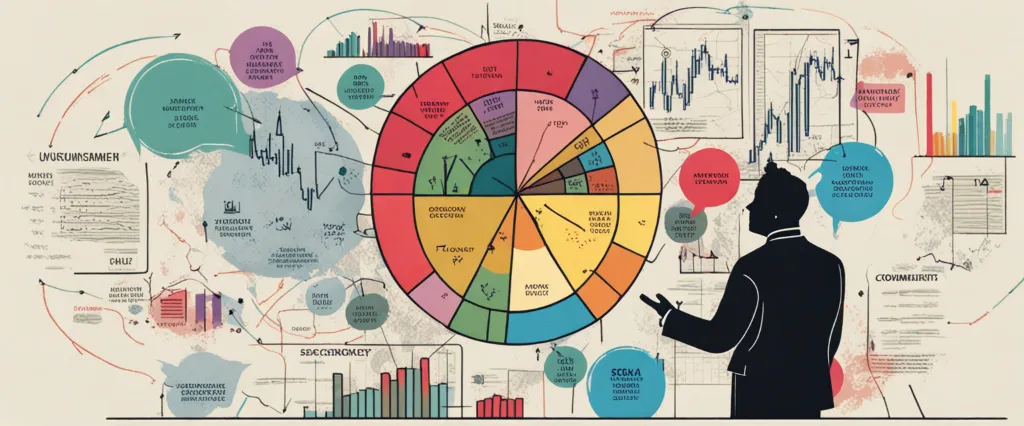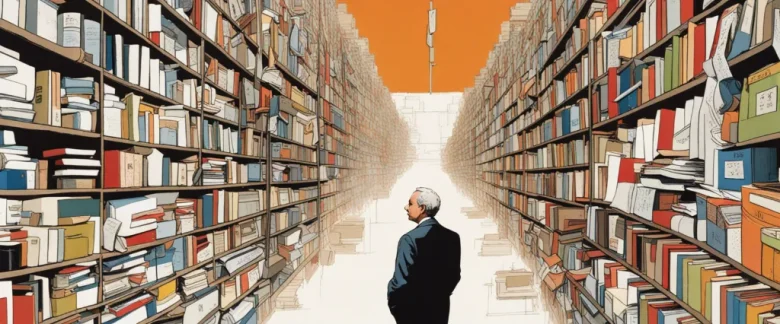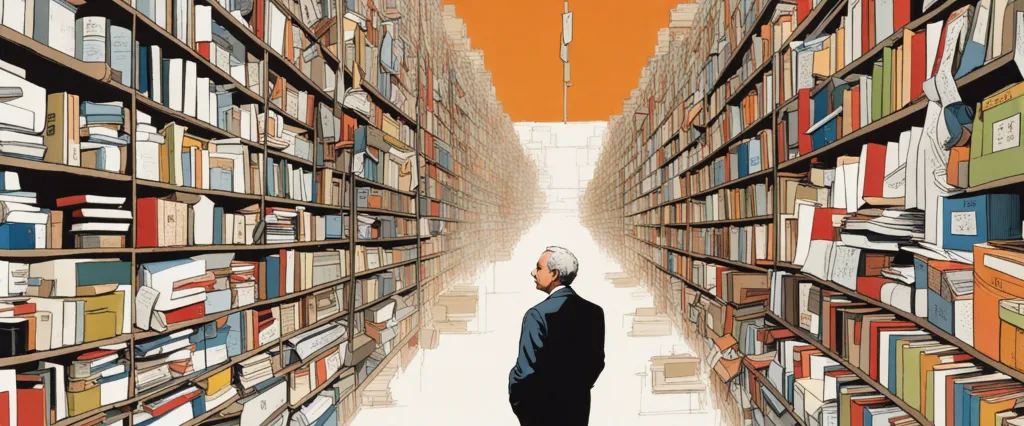In “How An Economy Grows And Why It Crashes” Peter D. Schiff provides an insightful and engaging explanation of the fundamentals of economic growth and the alarming factors that can lead to a devastating collapse. Schiff, an American economist, financial broker, and bestselling author, brings his expertise to the table as he simplifies complex economic concepts using an unconventional story of an island civilization. Through this tale, Schiff enlightens readers on the importance of sound economic policies and highlights the perils of misguided government interventions. With a unique blend of wit and wisdom, Schiff takes readers on an enlightening journey that sheds light on the intricacies of the economy and the catastrophic consequences of failing to understand its fundamental principles.
Chapter 1: The Foundation of Economic Growth
Chapter 1: The Foundation of Economic Growth of the book “How An Economy Grows And Why It Crashes” by Peter D. Schiff provides an overview of the basic principles of economic growth and the factors that contribute to it. The chapter aims to explain how an economy can grow over time and how certain policies or actions can hinder this growth.
Schiff begins by introducing the concept of a simple island economy, consisting of three individuals: Able, Baker, and Charlie. In this island economy, the individuals engage in activities such as fishing and clam digging to meet their basic needs. Schiff uses this analogy to explain the process of production and exchange, where individuals specialize in certain tasks and trade their goods or services to improve their overall well-being.
The chapter highlights the importance of savings and investment in economic growth. It explains that when individuals save some of their extra resources, those savings can be used for investment, which leads to the creation of new tools and technology, improved productivity, and ultimately economic growth. Schiff emphasizes the need for a productive investment to increase future output and improve the quality of life.
Furthermore, the chapter touches upon the role of currency and the risks associated with inflation created by excessive money creation. Schiff explains that when a central authority prints more money, it diminishes the value of existing currency, leading to a rise in prices. Inflation erodes the purchasing power of individuals, discourages savings, and distorts the allocation of resources within the economy.
Schiff concludes the chapter by noting that economic growth relies on a solid foundation of savings, investment, and sound monetary policies. He warns against government interventions and excessive regulations that can disrupt these key factors and impede the natural growth of an economy.
Overall, Chapter 1 lays the groundwork for understanding the fundamental principles of economic growth and the potential pitfalls that can lead to economic crises. It provides readers with a clear foundation to delve deeper into the complex workings of an economy and its vulnerabilities.
Chapter 2: The Role of Money
Chapter 2: The Role of Money in the book, “How an Economy Grows and Why It Crashes” by Peter D. Schiff, delves into the significance and functions of money within an economy. Schiff explains that money arises as a result of the need for a medium of exchange that improves upon the limitations of bartering.
The chapter begins by introducing the concept of barter, where individuals directly exchange goods and services with one another. However, this system has several drawbacks, such as the difficulty of finding someone who wants what you have and has what you want. It leads to a highly inefficient exchange process. Schiff highlights how the introduction of money as a common medium of exchange eliminates these limitations, facilitating a smoother and more efficient trading system.
Schiff emphasizes the crucial roles money plays in an economy. It not only serves as a medium of exchange but also acts as a unit of account, allowing individuals to measure the value of goods and compare prices. Furthermore, money serves as a store of value, enabling people to save wealth for future use.
The author then delves into the evolution of money, from the use of rare and valuable commodities like seashells to the standardization of coins and eventually to the adoption of paper money. Schiff notes the importance of money being backed by something of tangible value, such as gold or silver, to maintain trust and stability within the economic system.
However, the chapter concludes with a cautionary note about the potential dangers of unbacked, fiat money. Schiff warns that when money is no longer anchored to a tangible asset like gold, government institutions gain the ability to manipulate the money supply, leading to inflation and economic instability.
Overall, Chapter 2 explains the evolution, functions, and significance of money in an economy, highlighting the importance of a stable monetary system backed by tangible assets for long-term economic stability.
Chapter 3: The Role of Government
Chapter 3: The Role of Government discusses the importance and the potential downsides of government involvement in an economy. Peter D. Schiff, in his book How an Economy Grows and Why It Crashes, highlights the impacts of government intervention, regulations, and the creation of money by authorities.
Schiff emphasizes that the government plays a vital role in facilitating economic growth by maintaining law and order, protecting property rights, and enforcing contracts. Additionally, the government can provide some public goods and services that may not be efficiently produced by the private sector. These functions create a framework that allows individuals and businesses to flourish and contribute to overall economic development.
However, Schiff warns against excessive government intervention, as it can hinder economic progress. Excessive regulation and redistribution of wealth through taxation and welfare programs can discourage individuals from working, saving, and investing. When government spending and borrowing increase, it creates a burden on the economy by reducing the availability of resources for private investment and crowding out the private sector.
Furthermore, Schiff criticizes the government’s ability to manipulate the money supply through central banks. The expansion of money supply, known as inflation, dilutes the value of money and erodes people’s purchasing power. This can lead to misallocations of resources, distortions in the market, and ultimately economic downturns.
In summary, Chapter 3 underscores the significance of a limited but effective government in promoting economic growth. While government can provide essential services, it should avoid excessive regulations, wealth redistribution, and the manipulation of money supply. Schiff’s analysis aims to emphasize the potential negative consequences of an overbearing government, ultimately highlighting the importance of free market principles and individual economic decision-making.
Chapter 4: The Impact of Debt

Chapter 4 of “How An Economy Grows And Why It Crashes” by Peter D. Schiff delves into the impact of debt on the economy. The chapter aims to provide a comprehensive understanding of the consequences of excessive borrowing and the role it plays in economic booms and busts.
Schiff starts by illustrating the mechanics of debt accumulation. He explains how individuals, governments, and businesses borrow money and spend it in the economy, leading to a temporary boost in economic activity. However, this increased spending often creates a false sense of prosperity, which eventually results in an economic hangover.
The author emphasizes that debts need to be repaid eventually, and the burden falls on the borrowers and future generations. When debts become unsustainable, a debt crisis or recession can occur. Schiff illustrates this with the example of the fictional island nation in the book, demonstrating how excessive borrowing led to a collapse in their economy.
Schiff highlights two key consequences of excessive debt. Firstly, it diverts resources away from productive investments, as borrowers have to allocate a significant portion of their income to debt repayment. This diminishes future economic growth and hampers the creation of wealth. Secondly, excessive debt increases the vulnerability of an economy to external shocks. When borrowers reach their limits and can no longer service their debt, the ripple effects can be felt throughout the entire economy.
The author concludes the chapter by cautioning against the dangers of debt and the importance of balancing borrowing with prudent financial management. He highlights the need for governments to restrain their spending, businesses to avoid excessive leverage, and individuals to prioritize savings over borrowing.
In summary, Chapter 4 emphasizes that debt can fuel short-term economic growth but poses long-term risks. It warns against the negative consequences of excessive borrowing, which include diversion of resources and vulnerability to economic shocks. The chapter serves as a reminder for individuals, businesses, and governments to be cautious about accumulating debt and to consider the long-term implications for economic stability and growth.
Chapter 5: The Cycle of Boom and Bust
Chapter 5: The Cycle of Boom and Bust from the book “How An Economy Grows And Why It Crashes” by Peter D. Schiff delves into the inherent nature of the economy to move through cycles of expansion and contraction.
The chapter begins by discussing the role of savings and investment in an economy. As individuals save and invest, they contribute to the country’s capital stock, allowing businesses to expand and produce more goods and services. This leads to economic growth and a boom in the economy.
However, the author explains that the boom is often driven by an expansion in credit and loans. Initially, this credit expansion stimulates economic activity, but eventually, it leads to misallocations of resources and unsustainable growth. These misallocations are caused by the fact that borrowed funds are being used for projects that would not have been financially viable under normal circumstances.
As the credit expansion continues, the economy reaches a point where it can no longer sustain such growth, and the boom turns into a bust. This bust is characterized by a lack of available credit, leading to a contraction in economic activity. Businesses fail, unemployment rises, and the economy falls into a recession.
The chapter also discusses how the government, in an attempt to mitigate the bust, intervenes with expansionary monetary and fiscal policies. However, Schiff argues that instead of solving the underlying problems, these policies tend to perpetuate the cycle by delaying vital corrections.
In conclusion, Chapter 5 of “How An Economy Grows And Why It Crashes” highlights the cyclical nature of the economy, where a period of boom driven by credit expansion inevitably leads to a bust. The chapter emphasizes the role of savings, investment, and the misallocation of resources in this process, highlighting the need for a more sustainable approach to economic growth.
Chapter 6: The Role of Financial Markets
Chapter 6: The Role of Financial Markets is a part of the book How An Economy Grows And Why It Crashes by Peter D. Schiff. This chapter explores the crucial role that financial markets play in the growth and development of an economy.
The chapter begins by explaining that financial markets are the mechanism through which individuals and businesses can channel their savings into investments. Schiff introduces the concept of financial intermediaries, such as banks and stock markets, which bring together savers and borrowers looking for capital. These intermediaries provide the necessary means for individuals to lend their money to businesses or buy shares in companies.
Schiff emphasizes the importance of interest rates in financial markets. They dictate the supply and demand for loans or investments, affecting the overall economic activity. The author highlights the role of the Federal Reserve in manipulating interest rates, arguing that such interventions can distort market signals and lead to economic imbalances.
The chapter further explores the impact of speculation in financial markets. Schiff explains that while speculation can be beneficial, it can also lead to bubbles and crashes if not tempered by sound economic principles. The author cites examples from history, such as the dot-com bubble and the housing market crash, to illustrate the negative consequences of excessive speculation.
Additionally, Schiff underlines the importance of transparency and accountability in financial markets. He argues that regulations and oversight are necessary to prevent fraud and ensure the integrity of the system. However, he also cautions against excessive regulation, as it can stifle innovation and impede economic growth.
Overall, Chapter 6 sheds light on the role of financial markets in facilitating economic growth and investment. It emphasizes the need for a balanced approach to regulation, avoiding both excessive intervention and a lack of oversight. Understanding the functions and dynamics of financial markets is crucial for comprehending the broader workings of the economy and its susceptibility to booms and busts.
Chapter 7: International Trade and the Global Economy
Chapter 7 of “How an Economy Grows and Why It Crashes” by Peter D. Schiff focuses on international trade and its impact on the global economy. The chapter starts by highlighting the importance of trade in expanding economic opportunities and improving living standards for individuals and societies. It explains how nations with specific competitive advantages can specialize in certain goods and services, leading to a more efficient utilization of resources and increased productivity.
Schiff emphasizes the concept of comparative advantage, wherein countries produce and export goods at which they are relatively more efficient while importing goods that other countries produce more efficiently. He uses the example of a small island nation, which specializes in fishing due to its favorable weather and natural resources, and trades its surplus fish for goods it cannot produce domestically, such as lumber or bicycles. This trade allows the island to enhance its standard of living by accessing a wider range of goods.
The chapter also addresses the potential issues and misconceptions about international trade. Schiff explains the fallacy of protectionism, which involves restricting imports to protect domestic industries. He argues that protectionist measures, such as tariffs or quotas, harm the overall economy by limiting consumer choice and increasing prices, leading to lower standards of living.
Moreover, it is highlighted that trade imbalances can occur when one nation consistently borrows and imports more than it exports. While this may seem problematic, Schiff clarifies that trade imbalances are a natural consequence of nations’ varying saving and consumption habits. He argues that imbalances should be addressed through savings and investment rather than protectionism.
In summary, Chapter 7 of “How an Economy Grows and Why It Crashes” emphasizes the importance of international trade for economic growth and individual prosperity. It discredits protectionist policies and highlights the benefits of specialization and comparative advantage. By understanding the foundations of international trade, readers can appreciate the interconnectedness of the global economy and the advantages it brings to nations and individuals.

Chapter 8: Lessons from Economic Crashes
Chapter 8 of “How an Economy Grows And Why It Crashes” by Peter D. Schiff is titled “Lessons from Economic Crashes.” In this chapter, Schiff explores various economic crashes throughout history and emphasizes the importance of understanding the underlying causes and factors that contribute to these crises.
Schiff begins by discussing the famous stock market crash of 1929, known as Black Tuesday, which triggered the Great Depression. He highlights how the Federal Reserve’s policies, such as the easy credit and low-interest rates, created a false sense of prosperity, leading to unsustainable economic growth. When these policies were abruptly reversed, it caused a chain reaction of bank failures and a severe economic downturn.
The author also examines the housing bubble and subsequent financial crisis in 2008, starting with the government’s push for affordable housing through programs like the Community Reinvestment Act and the manipulation of interest rates by the Federal Reserve. These actions, coupled with lax lending standards and the securitization of subprime mortgages, caused a speculative frenzy and the eventual bursting of the housing bubble.
Schiff argues that these economic crashes are the result of government intervention and misguided policies rather than inherent flaws in free markets. He highlights the importance of sound money, limited government intervention, and the need for individuals and businesses to make informed decisions based on true market signals.
The chapter concludes with Schiff stressing the importance of learning from past economic crashes to prevent future crises. He suggests that individuals, policymakers, and investors should be aware of the dangers of excessive government intervention, easy credit, and artificial market distortions.
In summary, Chapter 8 of “How an Economy Grows And Why It Crashes” provides insightful lessons from significant economic crashes throughout history. Schiff emphasizes the role of government policies, such as easy credit and misguided interventions, in fueling these crises. By understanding and addressing these root causes, individuals and society can strive for a more stable and prosperous economy.
After Reading
In Peter D. Schiff’s book, “How an Economy Grows and Why It Crashes,” the author provides a clear and insightful explanation of the economy through an engaging and easy-to-understand story. By presenting the fictitious islands of “Ekon” and “Fishy,” Schiff simplifies complex economic concepts and demonstrates the consequences of unsustainable government intervention and monetary policies. Through the adventures and struggles of the characters, readers gain a deeper understanding of the importance of savings, investment, and production in promoting economic growth. Moreover, Schiff highlights how economic bubbles, driven by excessive borrowing and consumption, can ultimately lead to a damaging crash. Overall, the book serves as an eye-opening guide that not only educates, but also challenges conventional wisdom about the economy, making it essential reading for anyone interested in understanding the intricacies of our economic system.
1. The Undercover Economist” by Tim Harford – This book offers a unique and accessible explanation of how the economy works by exploring real-life examples and everyday activities. Harford delves into the hidden economic principles behind the choices we make and the consequences they have on the world around us.
2. Nudge: Improving Decisions About Health, Wealth, and Happiness” by Richard H. Thaler and Cass R. Sunstein – Thaler and Sunstein explore the concept of behavioral economics and how small, subtle changes in the way choices are presented can have a significant impact on decision-making. This book illuminates how our choices are influenced and provides insights into making better decisions for ourselves and society.
3. The Big Short” by Michael Lewis – For those interested in understanding the 2008 financial crisis, this book offers an engaging and gripping narrative. Lewis dives into the world of finance, explaining complex financial instruments in an accessible way and following the individuals who saw the crisis coming, ultimately profiting from it.
4. Freakonomics: A Rogue Economist Explores the Hidden Side of Everything” by Steven D. Levitt and Stephen J. Dubner – In this data-driven and thought-provoking book, Levitt and Dubner challenge conventional wisdom and explore the unconventional side of economics. Using empirical analysis, they uncover surprising connections and provide fascinating insights into various social phenomena.
5. “Economics in One Lesson” by Henry Hazlitt – This classic economics book provides an introduction to key economic principles through an easy-to-understand format. Hazlitt dissects various economic policies and their long-term effects, offering a concise lesson from each scenario. A timeless read that distills economics into practical insights for readers.




